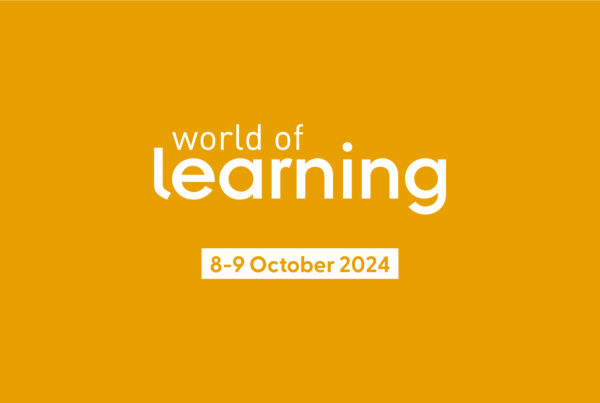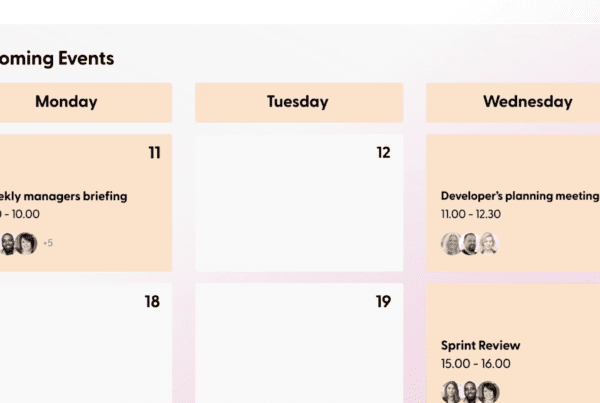Did you know disengaged employees cost the workplace £40 Billion globally due to lost productivity? 😯
Now, there’s a stat to make your eyes water, but the stark reality is…
In 2024, learners are MORE disengaged than ever! 😱
L&D is broken, and many organisations are really struggling to engage their learners.
Perhaps you reading this guide because you too have noticed this within your organisation and want to make a change. 🙋
Well, you’ve certainly landed in the right place, as here at Thirst, we dedicate ourselves to solving problems like this! 💁
This guide will explain everything you need to know to restore learner engagement in your organisation in a tangible and, most importantly, measurable way. 💡
So why does Learner Engagement matter?
When learners are engaged, they foster critical thinking, creativity, and active participation, which leads to the development of problem-solving skills and the ability to apply knowledge in various contexts.
Moreover, engaged learners contribute to a positive learning environment where collaboration, communication, and peer interaction thrive. 👌
Let’s zoom in on the benefits of engaged learners a little further…
Engaged Learner = Retention and Understanding ✅
When learners are actively engaged, they are more likely to connect new information with their existing knowledge and experiences, which enhances learning outcomes.
Engaged Learner = Motivation and Persistence ✅
Learners who find the material interesting, relevant, and engaging are more likely to invest time and effort in their learning journey.
Engaged Learner = Better Application of Knowledge ✅
Engaged learners can better apply their knowledge in real-world situations. They are more likely to transfer their knowledge to new contexts and problem-solving scenarios.
Engaged Learner = Critical Thinking and Creativity ✅
When learners are engaged, they are more likely to ask questions, explore ideas, and seek solutions independently.
Engaged Learner = A Positive Learning Environment ✅
Engagement contributes to a positive learning environment where learners feel valued, respected, and supported. A positive learning environment enhances collaboration, communication, and peer interaction, fostering a sense of community among learners.
If this is what you’re striving for 👆
Let’s take a look at the most effective strategies to boost learner engagement and how to execute them with finesse. 💪
7 Tried & Tested Ways to Boost Learner Engagement
1. Scarcity
It’s time to create a sense of urgency and exclusivity that motivates your learners to actively participate and invest in their learning experiences.
By offering limited-time access to training materials, exclusive webinars, or early access to new courses, educators can stimulate their learners’ curiosity and desire to acquire valuable knowledge and skills before they become unavailable. ⏳
Scarcity drives learners to prioritise their learning goals, fostering a sense of importance and a commitment to the learning process.
Additionally, the anticipation of gaining access to exclusive content or events enhances learners’ excitement and engagement levels, encouraging them to fully immerse themselves in the learning opportunities provided. 🙌
2. Social Proof
Boosting learner engagement through social proof involves leveraging the experiences and successes of others to inspire and motivate learners. 💭
By spotlighting success stories, sharing testimonials from other employees, and securing endorsements from subject matter experts, educators like you can provide tangible evidence of the value and impact of your learning programs. 📈
Highlighting real-life examples of individuals who have benefitted from the training creates a sense of credibility and relevance, encouraging learners to envision their own potential achievements. 🥇
Additionally, endorsements from respected experts in the field validate the content’s quality and relevance, further enhancing learners’ trust and investment in their educational journey with your organisation. 💪
3. Reciprocity
Boosting learner engagement through reciprocity involves creating a supportive and rewarding environment that encourages active participation and collaboration. 🫂
By implementing points, rewards, and benefits systems, you can incentivise your learners to engage consistently with the material, complete assignments, and contribute to discussions.
Offering perks such as certificates, badges, or access to exclusive resources reinforces learners’ sense of achievement and progress, motivating them to continue their learning journey. 🏅
Peer-to-peer learning communities further enhance engagement by fostering connections, sharing knowledge, and providing opportunities for collaboration and feedback.
Additionally, providing free learning resources expands access to education. It removes barriers to entry, allowing learners to explore new topics, acquire new skills, and pursue personal and professional growth at their own pace. 🙌
4. Gamification
Similarly to what we’ve spoken about above, boosting learner engagement through gamification harnesses the power of game mechanics to make the learning experience more interactive, enjoyable, and rewarding. 🎮
Community challenges encourage learners to collaborate, compete, and achieve shared goals, fostering a sense of healthy competition. 🏅
Milestone tracking provides learners with a visual representation of their progress and achievements, motivating them to strive for continuous improvement and reach new levels of proficiency. 🥈
Top learner leaderboards highlight outstanding performance and recognise individuals for their dedication and effort, inspiring friendly competition and peer recognition. 🥇🏆
Gamification not only enhances learner engagement but also promotes intrinsic motivation, creativity, and problem-solving skills, making the educational journey more enjoyable and fulfilling for all participants.
5. Emotional Appeal
By incorporating elements of emotional appeal, such as compelling visuals, moments of delight, and storytelling, you can captivate your learners’ attention and evoke genuine emotional responses. 😁
By utilising stunning visuals, interactive multimedia, and engaging design elements, educators can create a visually stimulating environment that enhances comprehension and retention of the material.
Moments of delight, such as unexpected surprises or rewards, spark joy and excitement, creating memorable experiences that motivate learners to actively participate and explore further. 😍
Storytelling, in particular, also has the power to connect learners with the content on a deeper level by weaving narratives that evoke empathy, curiosity, and a sense of purpose. 📖
6. Interactivity
By incorporating features such as comments, shares, likes, and polls, you can encourage your learners to engage with the content, share their thoughts, and interact with their peers. 👍👎
These interactive elements foster a sense of community, collaboration, and social learning as learners exchange ideas, provide feedback, and learn from each other’s perspectives. 👭
Live Q&A sessions provide opportunities for real-time interaction with instructors and subject matter experts, enabling learners to seek clarification, ask questions, and deepen their understanding of the material. 🗣️
Microlearning modules offer bite-sized lessons that are easy to digest and engage with, catering to learners’ short attention spans and busy schedules. 📢
Adaptive learning paths also personalise the learning experience by tailoring content and pacing to individual learners’ needs and preferences.
7. Curated Spaces
Similar to personalised feeds on platforms like Facebook, educators should offer learners customised content that aligns with their interests, learning styles, and proficiency levels. 📰
By recommending content based on learners’ past interactions and preferences, similar to the algorithm-driven suggestions on TikTok, educators can spark curiosity and encourage exploration of new topics and perspectives. 🧠
Additionally, fostering community building akin to platforms like Strava creates opportunities for learners to connect, collaborate, and support each other in their learning journey. 🧑🤝🧑
Through curated spaces, you can create dynamic and engaging learning environments that inspire curiosity, promote active participation, and empower your learners to achieve their educational goals. 🥅
How to measure the impact of your Learner Engagement
Now that you have the right strategies for boosting learning engagement, your attention may have turned to the age-old question…
How do I measure success? 🤔 📊
Key Factors To Measure Include…
- The completion rate of online courses. ☑️
- Time Spent dedicated to the course. ⏱️
- Positive interaction with the content. 😊
- High assessment Scores. 🧮
- Movement in Progress Tracking. 🏔️
- Engagement with Social Features. 🗣️
- Feedback and Ratings. 💬
- Retention Rate. 👀
- Drop-off Rate. 📉
And you can go beyond traditional measures of engagement by tracking…
- Skill Proficiency – Have your learners become more proficient?
- Application of Skills – Are your learners actually using what they’ve learned?
- Skill Retention – Do your learners remember what they’ve learned?
- Time to Skill Mastery – Are your learners picking things up more quickly?
- Skill Level Progression – Are your learners genuinely improving?
You can also…
Utilise Learning Analytics 📊
Implement learning analytics tools to track various metrics such as course completion rates, time spent on content, assessment scores, and user interactions.
Analysing these data points can provide insights into learner behaviour, preferences, and areas for improvement.
Conduct ROI Analysis 🎯
Probably one of the most critical metrics, you can quantify the ROI of your learner engagement efforts by comparing the costs to the benefits
Here’s how…
Conduct a thorough analysis to determine the return on investment of your learner engagement initiatives.
- Calculate the costs associated with developing and implementing engagement strategies, including technology investments, content creation, and personnel expenses.
- Measure the benefits, such as increased productivity, improved employee performance, reduced turnover, and enhanced customer satisfaction resulting from higher-skilled employees.
Alignment with Organisational Goals 🥅
Determine how increased learner engagement contributes to achieving strategic objectives, such as improved employee retention, enhanced customer satisfaction, increased sales, or higher profitability.
Surveys and Feedback 🗣️📢
Implement surveys, feedback forms, and focus groups to gather qualitative insights from learners regarding their engagement experiences.
Collecting feedback on course effectiveness, content relevance, user experience, and perceived value allows you to identify areas of strength and areas needing improvement.
Executive Dashboards and Reports 📈
Present learner engagement data in visually appealing executive dashboards and reports tailored to the needs of the C-suite.
Highlight key metrics, trends, and insights that demonstrate the impact of learner engagement initiatives on organisational performance.
Use clear and concise language to communicate the value proposition of investing in learner engagement to senior leadership.
Any L&D is only as effective as how engaged your learners are
Don’t let your organisation’s performance suffer.
Choose the right Learning Platform to support your initiatives, and you’ll be well on your way to optimising learner engagement whilst saving money and time.
Interested in learning more about how Thirst can help you do this?
Take the 2-minute guided tour today. 🔥
For more e-learning insights, resources and information, discover the Thirst blog.
You may also enjoy:
11 Strategies to Improve Your LMS Engagement in 2024 | Communication Styles: The 7 Most Common and How to Find Yours | Learning Loops: How to Use Them to Drive Learner Engagement






